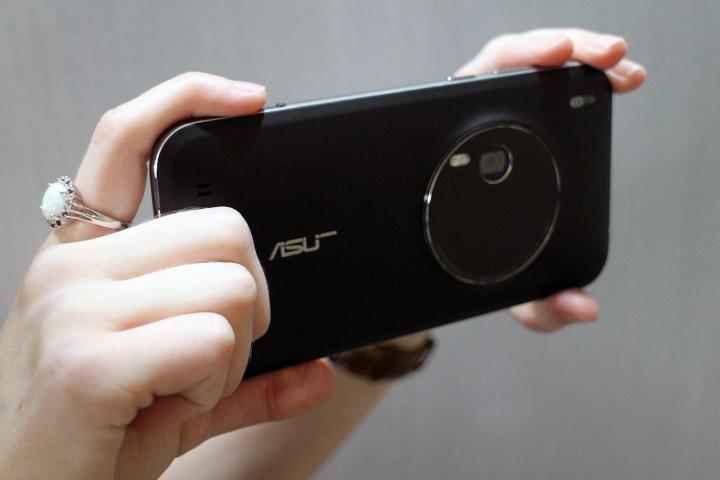
Updated by Robert Nazarian on 01-27-2016: Added in availability information for Japan and India.
Where to buy the ZenFone Zoom
ASUS held an event in Japan on January 25 to announce the availability of the ZenFone Zoom. It launches in Japan on February 5 with a variety of options. The 32GB and 64GB versions come with the Intel Atom Z3580, while the 128GB version will sport the beefier Intel Atom Z3590. The 32GB version will cost 49,800 yen and will comes with a plastic back. The 64GB version will be offered with either a plastic or premium leather back, for 55,800 yen and 59,800 yen, respectively. Finally, the 128GB only comes with the premium leather back, and it will cost 68,800 yen.
The ZenFone Zoom went on sale in Taiwan at the end of December 2015, and costs the equivalent of around $430 or $490, depending on the amount of storage space chosen. It also went on sale in India on January 22 for Rs 38,000 (128GB) on Flipkart and will soon be available at Asus retail stores. You can also add a small tripod and Zenflash for an additional Rs 2,000.
Subsequently, the ZenFone Zoom was confirmed for release in the U.S., and at the end of January 2016, it went up for order through B&H Photo where it costs an entirely reasonable $400.
This is an unlocked version and is being sold without a contract, but although it’s a U.S. model, the 4G LTE frequencies are best suited for use on AT&T. It’ll work on T-Mobile’s network, but doesn’t support the complete range of frequencies needed for total 4G LTE connectivity. If that’s not a concern, you are able to put your order in now. Deliveries are expected to start on February 1.
ZenFone Zoom specs and features
Why would you want the ZenFone Zoom? Because it’s a camera phone like no camera phone before it. The ZenFone Zoom comes with that rarest of features on a smartphone: An optical zoom to accompany its 13-megapixel camera. This isn’t a regular optical zoom either, it’s a completely new system that moves horizontally, rather than extending out like the tech used in the Samsung Galaxy K Zoom.
This means the phone is much, much slimmer. The aluminum body measures 5.5mm at its thinnest point extending out to a touch under 12mm, due to the camera lens and zoom mechanism being stored inside a Lumia-style camera hump. In addition to offering a 3x zoom feature, the camera has optical image stabilisation, a 10-mirror, four-piece camera lens produced by Hoya, laser autofocus, and a color temperature flash unit.
While the camera is the ZenFone Zoom’s standout feature, Asus hasn’t glossed over the rest, giving the phone a strong specification list. The screen measures 5.5-inches and has a 1080p resolution, while a 2.5GHz Intel Z3590 processor with 4GB of RAM provides the power. A 3000mAh battery with fast-charging — Asus says 60-percent capacity is reached in just under 40 minutes — makes best use of the internal space. Android 5.0 Lollipop is installed with Asus ZenUI, there’s a choice of 64GB or 128GB internal memory, a MicroSD card slot, plus the phone is sold in either black or white color schemes.
Will the ZenFone Zoom get a release in countries beyond Taiwan and the United States? We’ll have to wait and see, and we’ll keep you updated with all the news right here.
Previous updates:
Updated by Kyle Wiggers on 01-04-2016: Updated U.S. availability and pricing.
Updated by Andy Boxall on 01-21-2016: Added in where to buy the ZenFone Zoom in the U.S., with supporting links
Editors' Recommendations
- The Zenfone 9 looks like the small 2022 flagship you’ve been waiting for
- Phones that encourage you to use a rubbish digital zoom need to carry a warning
- Optical vs. digital zoom: What you need to know
- You’ve forgotten the Asus Zenfone 6, but it’s still the best $500 phone
- The Asus Zenfone 6 goes its own way with flip-over camera and 5,000mAh battery




